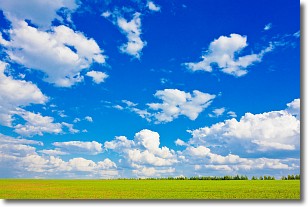Weather Alert in Indiana
Flood Warning issued June 16 at 10:42PM EDT until June 18 at 6:00AM EDT by NWS Indianapolis IN
AREAS AFFECTED: Fountain, IN; Parke, IN; Tippecanoe, IN; Vermillion, IN; Warren, IN
DESCRIPTION: ...The Flood Warning is extended for the following rivers in Indiana... Wabash River at Lafayette. Wildcat Creek near Lafayette. ...The Flood Warning continues for the following rivers in Indiana... Wabash River at Montezuma. .Rainfall amounts of three to over five inches in parts of north central Indiana over the weekend is producing minor flooding along Wildcat Creek near Lafayette and on the upper to middle Wabash. The crest on the Wildcat is near Lafayette and on the Wabash is approaching Lafayette, and flooding should come to an end Tuesday night into Wednesday. With more rainfall expected Wednesday through Thursday, flooding could redevelop mid to late week. * WHAT...Minor flooding is occurring and minor flooding is forecast. * WHERE...Wabash River at Lafayette. * WHEN...Until Wednesday morning. * IMPACTS...At 12.0 feet, Water may approach a couple low county roads. * ADDITIONAL DETAILS... - At 9:30 PM EDT Monday the stage was 12.0 feet. - Recent Activity...The maximum river stage in the 24 hours ending at 9:30 PM EDT Monday was 12.0 feet. - Forecast...The river will rise to 12.1 feet just after midnight tonight. It will then fall below flood stage tomorrow evening to 7.9 feet Friday morning. It will rise to 8.5 feet Saturday morning. It will then fall again and remain below flood stage. - Flood stage is 11.0 feet. - http://www.weather.gov/safety/flood
INSTRUCTION: Motorists should not attempt to drive around barricades or drive cars through flooded areas. Additional information is available at www.weather.gov/ind. The next statement should be issued Tuesday afternoon by around 145 PM EDT.
Want more detail? Get the Complete 7 Day and Night Detailed Forecast!
Current U.S. National Radar--Current
The Current National Weather Radar is shown below with a UTC Time (subtract 5 hours from UTC to get Eastern Time).

National Weather Forecast--Current
The Current National Weather Forecast and National Weather Map are shown below.

National Weather Forecast for Tomorrow
Tomorrow National Weather Forecast and Tomorrow National Weather Map are show below.

North America Water Vapor (Moisture)
This map shows recent moisture content over North America. Bright and colored areas show high moisture (ie, clouds); brown indicates very little moisture present; black indicates no moisture.

Weather Topic: What are Contrails?
Home - Education - Cloud Types - Contrails
 Next Topic: Cumulonimbus Clouds
Next Topic: Cumulonimbus Clouds
A contrail is an artificial cloud, created by the passing of an
aircraft.
Contrails form because water vapor in the exhaust of aircraft engines is suspended
in the air under certain temperatures and humidity conditions. These contrails
are called exhaust contrails.
Another type of contrail can form due to a temporary reduction in air pressure
moving over the plane's surface, causing condensation.
These are called aerodynamic contrails.
When you can see your breath on a cold day, it is also because of condensation.
The reason contrails last longer than the condensation from your breath is
because the water in contrails freezes into ice particles.
Next Topic: Cumulonimbus Clouds
Weather Topic: What are Cumulus Clouds?
Home - Education - Cloud Types - Cumulus Clouds
 Next Topic: Drizzle
Next Topic: Drizzle
Cumulus clouds are fluffy and textured with rounded tops, and
may have flat bottoms. The border of a cumulus cloud
is clearly defined, and can have the appearance of cotton or cauliflower.
Cumulus clouds form at low altitudes (rarely above 2 km) but can grow very tall,
becoming cumulus congestus and possibly the even taller cumulonimbus clouds.
When cumulus clouds become taller, they have a greater chance of producing precipitation.
Next Topic: Drizzle
Current conditions powered by WeatherAPI.com




